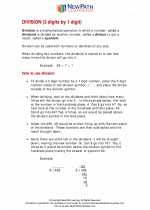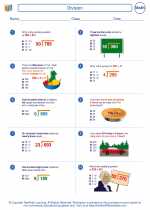Equation
An equation is a mathematical statement that shows the equality of two expressions. It consists of an equal sign (=) between two expressions, with one expression on the left side of the equal sign and the other expression on the right side. The expressions on both sides of the equal sign are called the "sides" of the equation.
Types of Equations
There are different types of equations, including:
- Linear Equations: Equations in which the highest power of the variable is 1. For example: 2x + 3 = 7.
- Quadratic Equations: Equations in which the highest power of the variable is 2. For example: x^2 - 4x + 4 = 0.
- Exponential Equations: Equations in which the variable appears in the exponent. For example: 3^x = 27.
- Trigonometric Equations: Equations involving trigonometric functions like sine, cosine, or tangent. For example: sin(x) = 0.5.
Solving Equations
To solve an equation means to find the value of the variable that makes the equation true. Here are the general steps for solving an equation:
- Isolate the Variable: Get the variable on one side of the equation by performing inverse operations.
- Simplify: Combine like terms and perform any necessary operations to simplify the equation.
- Solve for the Variable: Determine the value of the variable that satisfies the equation.
- Check: Substitute the value found back into the original equation to ensure it satisfies the equation.
Equation Study Guide
When studying equations, it's important to understand the following key concepts:
- The meaning of an equation and its components (equal sign, expressions, sides).
- The different types of equations and their characteristics.
- The steps involved in solving equations.
- How to check the solution to an equation.
Practice solving equations of various types and difficulty levels to strengthen your understanding. Additionally, familiarize yourself with the properties of equality and the rules for manipulating equations.
Remember to always show your steps when solving equations to avoid making errors, and don't forget to check your solutions!
.◂Math Worksheets and Study Guides Sixth Grade. Division

 Worksheet/Answer key
Worksheet/Answer key
 Worksheet/Answer key
Worksheet/Answer key
 Worksheet/Answer key
Worksheet/Answer key
